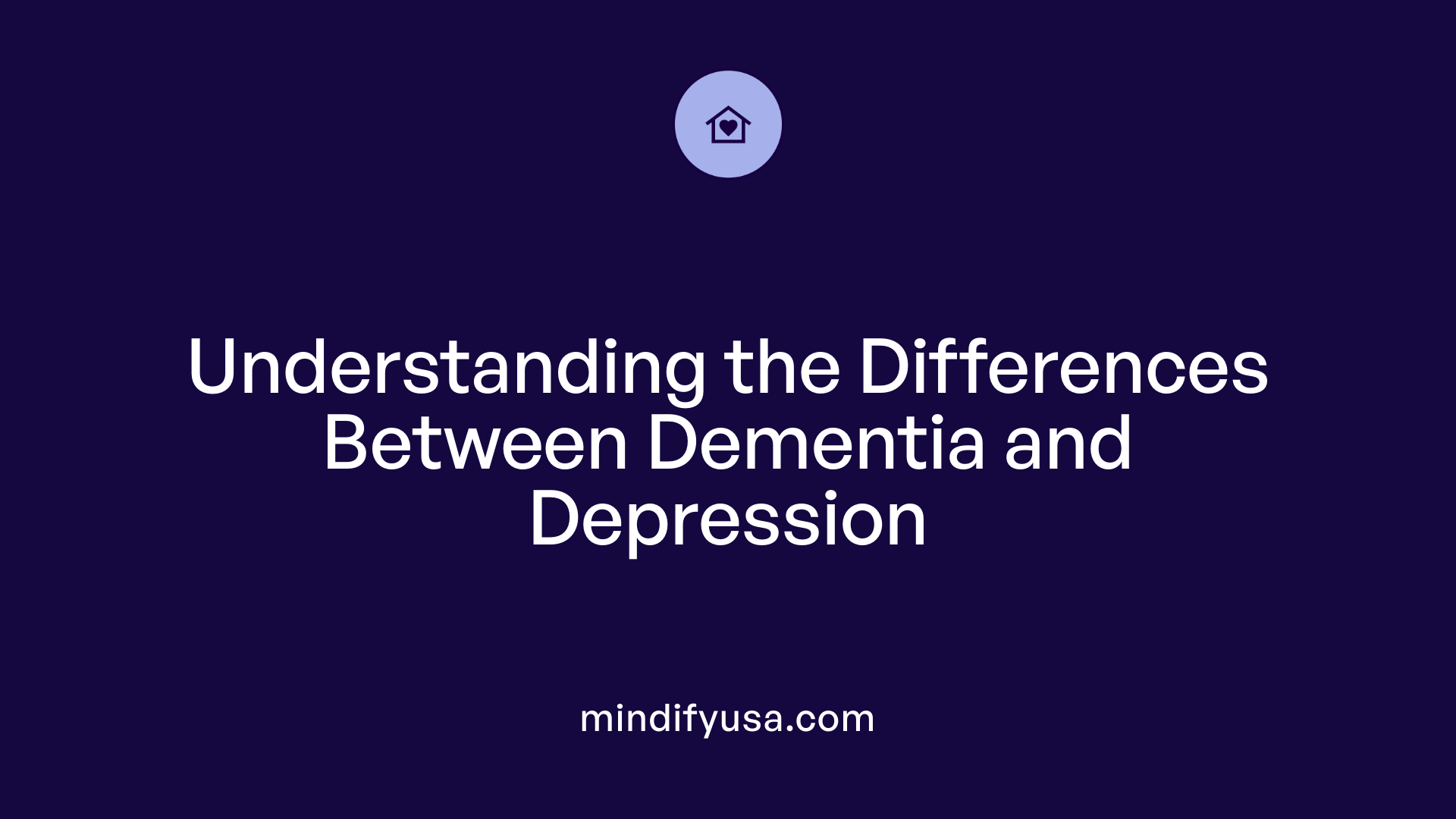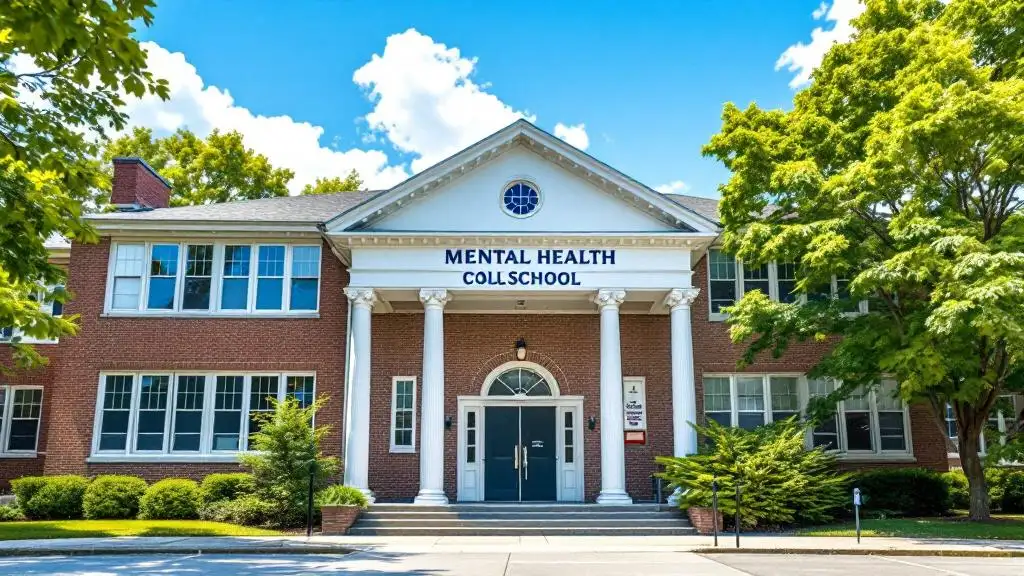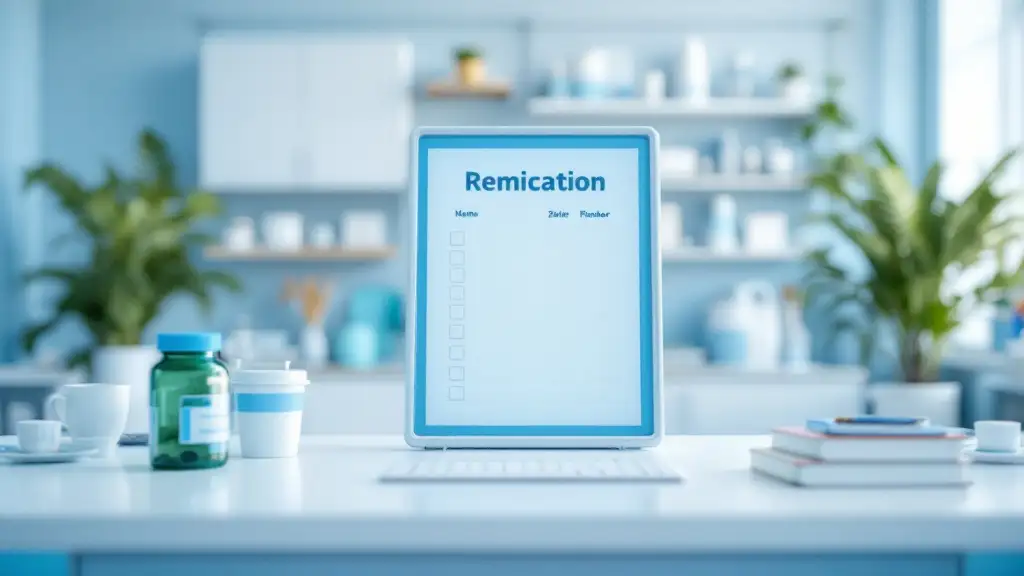Recognizing the Roots of Emotional Changes in Seniors
Sudden mood swings in elderly parents can be challenging for families and caregivers alike. These fluctuations may be rooted in a complex mix of medical, psychological, and social factors, often signaling underlying health concerns that require careful attention. Understanding the causes, symptoms, and effective management strategies is essential for maintaining the wellbeing of aging loved ones and supporting their emotional health.
Common Causes of Mood Swings in Elderly Adults

What are common causes of mood swings in elderly adults?
Mood swings in seniors can arise from a variety of factors related to both physical health and emotional well-being. Understanding these causes is vital for caregivers and family members to provide appropriate support.
One primary contributor is mental health conditions, notably depression and anxiety. These disorders are quite common in older adults, with approximately 20% experiencing some mental health concern, yet only a third seek treatment. Depression can present with symptoms such as persistent sadness, loss of interest in activities, and physical complaints like aches and pains, which may be misunderstood as normal aging.
Neurodegenerative diseases, especially dementia and Alzheimer’s, play a significant role. These conditions can cause personality changes, irritability, agitation, and mood instability due to brain deterioration affecting emotions and cognition. Early detection and management are crucial for improving quality of life.
Physical health issues are also influential. Chronic pain from conditions like arthritis or other medical illnesses can lead to frustration and emotional distress. Unmanaged or ongoing discomfort often manifests as mood swings or aggressive behavior. Additionally, hormonal changes — especially in women after menopause — can impact mood due to fluctuations in estrogen levels.
Nutritional deficiencies and sleep disturbances are common yet often overlooked factors. Poor nutrition or irregular sleep patterns can cause or worsen mood instability. Nutritional deficits like vitamin D or iron deficiencies may affect brain function, while sleep issues contribute to fatigue and emotional lability.
Social factors significantly impact mood. Loneliness, grief from the loss of loved ones, and social isolation are linked to depression and increased emotional fluctuations. Reduced social engagement can decrease mental stimulation and increase feelings of despair.
Side effects from medications are another important cause. Certain pharmaceuticals, such as antidepressants, steroids, or hormone therapies, can have unintended emotional effects. Substance use, including alcohol or recreational drugs, can further influence emotional regulation.
Finally, neurological and cognitive issues, including brain injuries or infections, can alter mood stability. These may manifest as sudden mood changes, irritability, or aggression, necessitating medical evaluation.
Addressing the multifaceted causes of mood swings involves comprehensive assessment by healthcare professionals. Interventions may include medication adjustments, therapy, enhanced social support, nutrition, and lifestyle changes. Early recognition and tailored management can greatly improve emotional stability and overall wellbeing for seniors.
| Causes | Description | Possible Interventions |
|---|---|---|
| Mental health conditions | Depression and anxiety are prevalent among seniors, affecting mood stability. | Therapy, medication, social support |
| Neurodegenerative diseases | Dementia and Alzheimer’s lead to personality and mood changes. | Early diagnosis, medications, behavioral therapies |
| Physical health issues | Chronic pain and illnesses contribute to frustration and depression. | Pain management, medical treatment |
| Hormonal fluctuations | Post-menopausal hormonal shifts can impact emotional regulation. | Hormone therapy, counseling |
| Nutritional deficiencies | Lack of essential vitamins and minerals affects brain health. | Dietary improvements, supplements |
| Sleep disturbances | Poor sleep hygiene exacerbates mood irritability. | Sleep therapy, routine adjustments |
| Social isolation and grief | Loss of loved ones and loneliness can trigger depression. | Community engagement, counseling |
| Medication side effects | Pharmacological treatments may unintentionally cause mood swings. | Medical review, alternative medications |
| Neurological issues | Brain injuries or infections affect mood and behavior. | Medical intervention, physical therapy |
Recognizing and addressing these diverse factors can help improve emotional stability and enhance the quality of life for elderly individuals. Close communication with healthcare providers and a comprehensive support system are essential components of effective management.
Recognizing Symptoms and Warning Signs of Mood Swings

How can caregivers recognize symptoms and warning signs of sudden mood swings or behavioral changes in older adults?
Caring for seniors involves attention to subtle signs that may indicate their mental and emotional well-being is changing. Caregivers can spot early warning signs of mood swings or behavioral shifts by carefully observing the older adult’s daily behaviors.
Abrupt mood shifts are common indicators, which might include sudden episodes of crying, irritability, or aggressive outbursts that seem excessive or out of character. These changes may happen unexpectedly and can be distressing for both the individual and the caregiver.
In addition to mood alterations, other behavioral signs include social withdrawal—avoiding interactions or activities they previously enjoyed. Confusion and difficulty concentrating can also emerge, especially if these symptoms develop gradually or persist.
Physical signs such as changes in sleep patterns—either sleeping too much or too little—and appetite fluctuations are often associated with underlying mental health issues like depression or dementia. Agitation, restlessness, and physical aggression are also concerning and warrant attention.
It is vital to consider the context of these behaviors. Underlying causes can range from depression and neurodegenerative diseases such as dementia or Alzheimer’s, to physical pain, medication side effects, or emotional distress related to grief or loneliness.
Persistent or severe behavior changes lasting more than two weeks should be seen as a red flag. If these symptoms do not improve or worsen, consulting a healthcare professional for thorough assessment is important.
To support early detection, caregivers should maintain open communication, regularly review the senior’s physical health and medications, and encourage social engagement. Recognizing these symptoms early can lead to timely intervention, improving the individual’s quality of life and preventing further decline.
Being attentive to these warning signs not only helps in managing potential health crises but also fosters a stronger, more empathetic caregiving relationship, ensuring the senior receives appropriate care and support.
Differentiating Between Dementia, Mental Health Issues, and Aging-related Mood Changes

How are rapid, unpredictable mood swings with cognitive symptoms in dementia different from persistent low mood and hopelessness in depression?
Dementia is characterized by sudden, unpredictable mood swings often accompanied by cognitive decline, confusion, and memory problems. These mood changes might manifest as agitation, irritability, or impulsiveness and tend to fluctuate rapidly, especially during specific periods of the day. In contrast, depression in older adults presents as a persistent low mood, feelings of hopelessness, loss of interest, and reduced energy that last most of the day over weeks or months.
While dementia-related mood fluctuations are intertwined with cognitive impairments, depression's emotional symptoms may occur with or without cognitive deficits. Recognizing the duration and nature of these symptoms can guide diagnosis.
What is pseudodementia, and how does it mimic dementia symptoms?
Pseudodementia refers to depression that mimics the symptoms of dementia, such as memory loss, confusion, and difficulty concentrating. Unlike true dementia, the cognitive impairment in pseudodementia is reversible with appropriate treatment of depression. Patients with pseudodementia often complain about memory issues or difficulty focusing but typically retain insight into their condition and may exhibit mood symptoms like sadness, tearfulness, or hopelessness.
Differentiating pseudodementia from genuine dementia involves careful clinical assessment, including timing, symptom progression, and response to antidepressant therapy.
How do screening tools and neuropsychological testing help differentiate these conditions?
Screening instruments like the Geriatric Depression Scale (GDS) or the Patient Health Questionnaire (PHQ-9) help identify depression in older adults. Neuropsychological testing evaluates cognitive functions such as memory, attention, language, and executive function. In dementia, these tests show consistent decline across multiple domains, whereas in depression, cognitive performance may be impaired but often improves with treatment.
Comprehensive assessments combining these tests with clinical interviews provide a clearer picture and aid in distinguishing depression from dementia.
What features aid in the differentiation, such as onset and symptom course?
The pattern of symptom onset and progression is crucial. Dementia usually develops gradually over months or years, with steady decline. Mood symptoms associated with dementia may fluctuate unpredictably, sometimes worsening in the late afternoon or evening (sundowning).
Conversely, depression may have a more sudden or subacute onset, with persistent low mood and related symptoms. The course of depression tends to improve with intervention, while dementia continues to progress despite treatment.
Additional factors include the presence of physical or neurological signs, response to treatment, and collateral history from family members about the onset and development of symptoms.
| Aspect | Dementia | Depression | Pseudodementia |
|---|---|---|---|
| Onset | Gradual over months/years | Often sudden/subacute | Usually recent onset, related to mood |
| Course | Progressive decline | Fluctuates, improves with treatment | Reversible with depression treatment |
| Cognitive signs | Memory, language, visual-spatial deficits | Concentration difficulty, distractibility | Memory complaints, but less severe |
| Emotional signs | Apathy, irritability, mood swings | Persistent sadness, hopelessness | Mood disturbance, hopelessness |
| Response to treatment | Limited | Good | Good |
Are mood swings related to dementia or mental health issues, and how can they be differentiated?
Mood swings can be linked to both dementia and mental health conditions such as depression. In dementia, mood shifts are often short-lived, unpredictable, and coincide with cognitive changes. These fluctuations may be part of the neurodegenerative process affecting brain regions like the frontal lobes.
Depression-related mood disturbances tend to be more persistent, involving feelings of sadness, loss of interest, and hopelessness. Depression can sometimes resemble dementia in older adults, especially when cognitive symptoms are mild or comorbid.
Differentiation relies on a thorough evaluation, including clinical history, mental status examinations, screening tools, neuropsychological assessments, and observation of symptom course. Understanding triggers and context also helps identify whether mood swings are due to neurodegeneration or a treatable mental health disorder.
Searching for more information
For further insights into distinguishing dementia from depression in the elderly mood symptoms, search using the query: "dementia vs depression in elderly mood symptoms." This can lead to studies, guidelines, and expert opinions that deepen understanding and inform clinical practice.
Strategies for Managing Mood Swings and Behavioral Problems

What strategies can caregivers use to manage mood swings and behavioral problems in elderly parents?
Caring for elderly parents who experience mood swings and behavioral changes can be challenging. Implementing effective strategies involves a mix of compassionate communication, environmental adjustments, medical oversight, and lifestyle modifications.
First and foremost, caregivers should communicate with patience and empathy. Maintaining a calm and gentle demeanor helps de-escalate emotional outbursts and fosters a safe environment. When a senior shows signs of agitation, reacting with understanding rather than frustration can make a significant difference.
Identifying and addressing triggers is crucial. Common causes include fatigue, physical pain, hunger, medication side effects, or environmental factors such as noise and routine disruptions. Regularly monitoring these elements and making necessary adjustments—like ensuring proper nutrition, administering or reviewing medications, and creating a quiet, comfortable space—can reduce the frequency and intensity of mood swings.
A medical review of medications and health conditions is essential. Some drugs can cause mood changes or interact negatively, especially in seniors with multiple health issues. Consulting healthcare providers to evaluate current medications and assess for underlying health problems like depression, infections, or neurodegenerative diseases helps in tailoring an appropriate treatment plan.
Encouraging social activities and mental engagement plays a vital role. Isolation and loneliness are prevalent in seniors and contribute to depression and emotional instability. Facilitating participation in community groups, hobbies, or indoor activities like puzzles and reading can boost mood and provide emotional support.
Tracking behavioral patterns over time assists in understanding individual triggers and responses. Noting changes in mood, behavior, or routines can help healthcare professionals diagnose potential problems early. Communicating these observations during medical consultations enables more targeted treatment approaches.
Supporting overall well-being through lifestyle changes is also beneficial. Regular physical activity, a balanced diet, adequate sleep, and engaging in hobbies can improve mood and overall health. These strategies contribute to emotional resilience and reduce the likelihood of severe mood swings.
In summary, managing mood swings in elderly parents requires a holistic approach: patient and compassionate communication, proactive identification of triggers, medical oversight, social engagement, behavioral tracking, and promoting healthy lifestyle habits. Combining these tactics can create a supportive environment that helps seniors maintain emotional stability and quality of life.
Supporting Elders During Emotional Outbursts or Behavioral Fluctuations

How can family members support elderly individuals experiencing emotional outbursts or behavioral changes?
Supporting seniors through emotional outbursts or shifting behaviors requires patience, understanding, and strategic approaches. Creating a calm, safe environment is foundational. This involves minimizing loud noises, bright lights, and clutter that can increase agitation. Ensuring the home has safety features—like fall prevention devices, clear pathways, and easy-to-reach necessities—helps prevent injuries during episodes.
Practicing patience and validation means actively listening and acknowledging their feelings without judgment. Using gentle, respectful communication can de-escalate tense situations, helping elders feel understood and secure. Maintaining routines provides stability; predictable daily schedules help reduce confusion and anxiety, common triggers for behavioral changes.
Identifying potential causes of behavioral shifts is crucial. Medical issues like infections, pain, or medication side effects often underpin these changes. Consulting healthcare professionals for assessment and management can address these root causes effectively. For example, adjusting medication or treating underlying medical conditions can significantly improve behavioral symptoms.
Engaging elders in social activities and physical exercises can enhance emotional health. Activities such as walk in the park, light stretching, or hobbies like gardening stimulate the mind and body, reducing feelings of loneliness and depression. Mental exercises—puzzles or memory games—also support cognitive resilience.
Implementing safety measures is vital. Using identification bracelets, installing safety locks, and ensuring proper lighting help prevent accidents. Home modifications, such as grab bars in bathrooms or stair railings, provide additional security. These steps help caregivers create an environment that promotes independence while reducing risks during behavioral episodes.
In essence, a combination of environmental adjustments, emotional support, medical consultation, and lifestyle engagement forms the cornerstone of caring for seniors experiencing mood swings or behavioral fluctuations. Bringing patience, compassion, and strategic safety measures together can greatly improve their quality of life and emotional stability.
Emotional and Behavioral Changes in Aging: What Caregivers Should Know
What are the emotional and behavioral changes associated with aging that caregivers should be aware of?
As people age, they often experience a variety of emotional and behavioral shifts that caregivers need to understand to provide appropriate support. Emotional changes frequently include increased feelings of sadness, anxiety, irritability, and mood swings. These fluctuations can be linked to health issues, loss of independence, social isolation, or underlying mental health conditions.
Behaviorally, seniors may withdraw from social activities, become confused more often, or exhibit agitation and difficulty maintaining relationships. While mild memory lapses and occasional forgetfulness are common and considered part of normal aging, significant changes—such as disorientation or aggression—may indicate serious health concerns like dementia or Alzheimer’s disease.
Depression in older adults manifests differently than in younger people. It can appear as persistent sadness, feelings of hopelessness, social withdrawal, or a decline in physical and mental functioning. Early recognition of these signs is vital as untreated depression can severely affect quality of life and may worsen other health conditions.
Interestingly, many seniors maintain or even improve their emotional resilience over time, developing greater emotional regulation and a positivity bias. However, neurodegenerative diseases often disrupt this balance, leading to sudden personality shifts or emotional instability.
Understanding that these changes are partly natural but can also signal underlying issues allows caregivers to approach their loved ones with compassion. It encourages the creation of structured routines, emotional support, and timely professional intervention. With proper understanding and intervention, many behavioral and emotional challenges faced during aging can be managed effectively, promoting better mental health and a sense of well-being in seniors.
The Importance of Early Detection and Appropriate Treatment
Recognizing severe mood swings as potential health issues
Severe or sudden mood swings in seniors should never be ignored. These abrupt changes in behavior could indicate underlying health problems such as infections, medication reactions, or neurodegenerative diseases like Alzheimer’s or dementia. For example, increased irritability, paranoia, or violent outbursts might point to neurodegenerative processes or mental health conditions that require medical attention.
Caregivers and family members should pay close attention to behavioral cues such as cryfulness, physical aggression, rapid shifts in emotion, sleep disruptions, withdrawal from social activities, or inappropriate gestures. These signs often act as signals that the elder’s well-being needs urgent assessment.
Screening tools and medical assessments
Early detection begins with routine screening and comprehensive medical evaluation. Healthcare providers use various screening tools designed for seniors to identify mental health issues like depression, anxiety, or early signs of dementia. These assessments involve questionnaires, mood inventories, and cognitive tests to distinguish between normal aging and treatable health conditions.
Doctors may perform physical examinations and lab tests to rule out medical causes such as thyroid issues, nutritional deficiencies, or medication side effects. Evaluating recent medical history, current medications, and social factors helps in building a complete picture.
Treatments including psychotherapy, medications, and therapies like ECT or rTMS
Treatment options encompass a variety of approaches tailored to the individual’s needs. Psychotherapy, particularly cognitive-behavioral therapy, can help seniors develop coping strategies and address emotional distress.
Medications such as antidepressants, especially SSRIs, are often prescribed, but they must be carefully managed due to age-related physiological changes affecting drug metabolism and potential side effects.
In more severe cases, therapies like Electroconvulsive Therapy (ECT) or repetitive transcranial magnetic stimulation (rTMS) are considered. ECT is highly effective for resistant depression and involves controlled electrical stimulation to the brain. rTMS uses magnetic fields to stimulate nerve cells and can be a safer alternative for seniors who may not tolerate medications well.
Lifestyle adjustments and social support
Lifestyle modifications are vital components of treatment. Encouraging physical activity, a balanced diet, proper sleep hygiene, and engagement in social activities help improve mood and overall health. Social support from friends, family, community groups, and in-home services reduces loneliness and isolates, which are significant contributors to depression and cognitive decline.
Simple measures such as regular outings, hobby participation, and technological tools for virtual connections can make a substantial difference. Creating a safe, stimulating environment aids emotional well-being.
Treatment of depression, including psychotherapy and medication
Research shows that depression in older adults is highly treatable. Combining psychotherapy with medications yields better outcomes, especially when therapy addresses cognitive distortions and emotional management.
Monitoring medication effectiveness and side effects is critical. Adjustments by healthcare providers ensure optimal dosing and minimize adverse effects, which can be more pronounced in the elderly.
Effectiveness of lifestyle changes like exercise and nutrition
Lifestyle improvements are not just supportive but can be as effective as medication for some seniors. Regular physical activity enhances brain health, elevates mood through endorphin release, and improves sleep quality.
Nutrition also plays a crucial role. A diet rich in lean proteins, vegetables, omega-3 fatty acids, and vitamins supports cognitive function and physical health.
In summary, recognizing severe mood swings as warning signs and employing a combination of early screenings, medical assessments, tailored treatments, and lifestyle adjustments are fundamental for addressing mental health in seniors. Early intervention can significantly mitigate the impact of mental health conditions, such as depression, and improve quality of life.
| Aspect | Description | Additional Notes |
|---|---|---|
| Recognizing Symptoms | Sudden mood swings, aggression, withdrawal | Alerts for health issues |
| Screening Tools | Mood inventories, cognitive tests | Used by healthcare providers |
| Medical Assessment | Lab tests, physical exams | Rules out medical causes |
| Treatments | Psychotherapy, medication, ECT, rTMS | Tailored to individual needs |
| Lifestyle Changes | Exercise, diet, social activities | Supports overall well-being |
| Importance of Early Detection | Leads to better outcomes | Reduces risks of severe complications |
Supporting Elderly Well-being through Awareness and Action
Understanding the multifaceted causes of mood swings in elderly parents is vital for timely and effective intervention. By recognizing symptoms early, differentiating between dementia and mental health issues, and employing compassionate management strategies, families can significantly improve their loved ones' quality of life. Addressing underlying medical and emotional concerns, encouraging social engagement, and seeking professional help when needed form the cornerstone of comprehensive care. Through awareness, patience, and targeted support, families can navigate the emotional changes associated with aging, ensuring their parents’ dignity and happiness are preserved during this life stage.
References
- Are Mood Swings in the Elderly a Sign of Something More?
- How to Handle Mood Swings in Your Elderly Loved One
- Depression and Older Adults | National Institute on Aging
- Behavior & Personality Changes | Memory and Aging Center - UCSF
- 10 Signs Your Elderly Parent Needs Help - Talkspace
- Dealing with Cranky Elderly Parents | Residential Care Communities
- Guide to Angry Outbursts in Elderly | Four Oaks Healthcare
- Mood Swings: What They Are & Causes - Cleveland Clinic
- 5 of the Most Common Causes of Mood Swings in Elderly Women






































































































